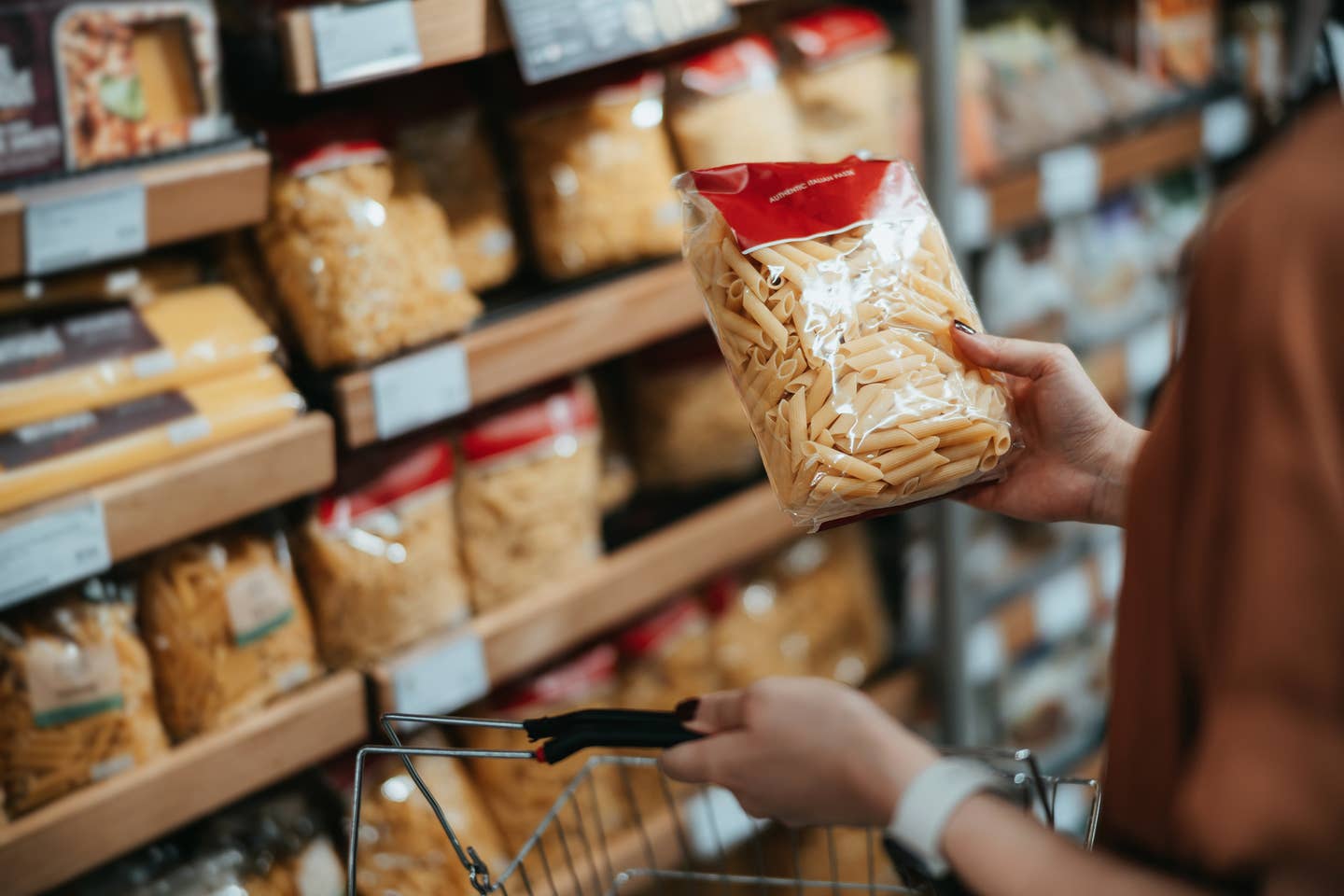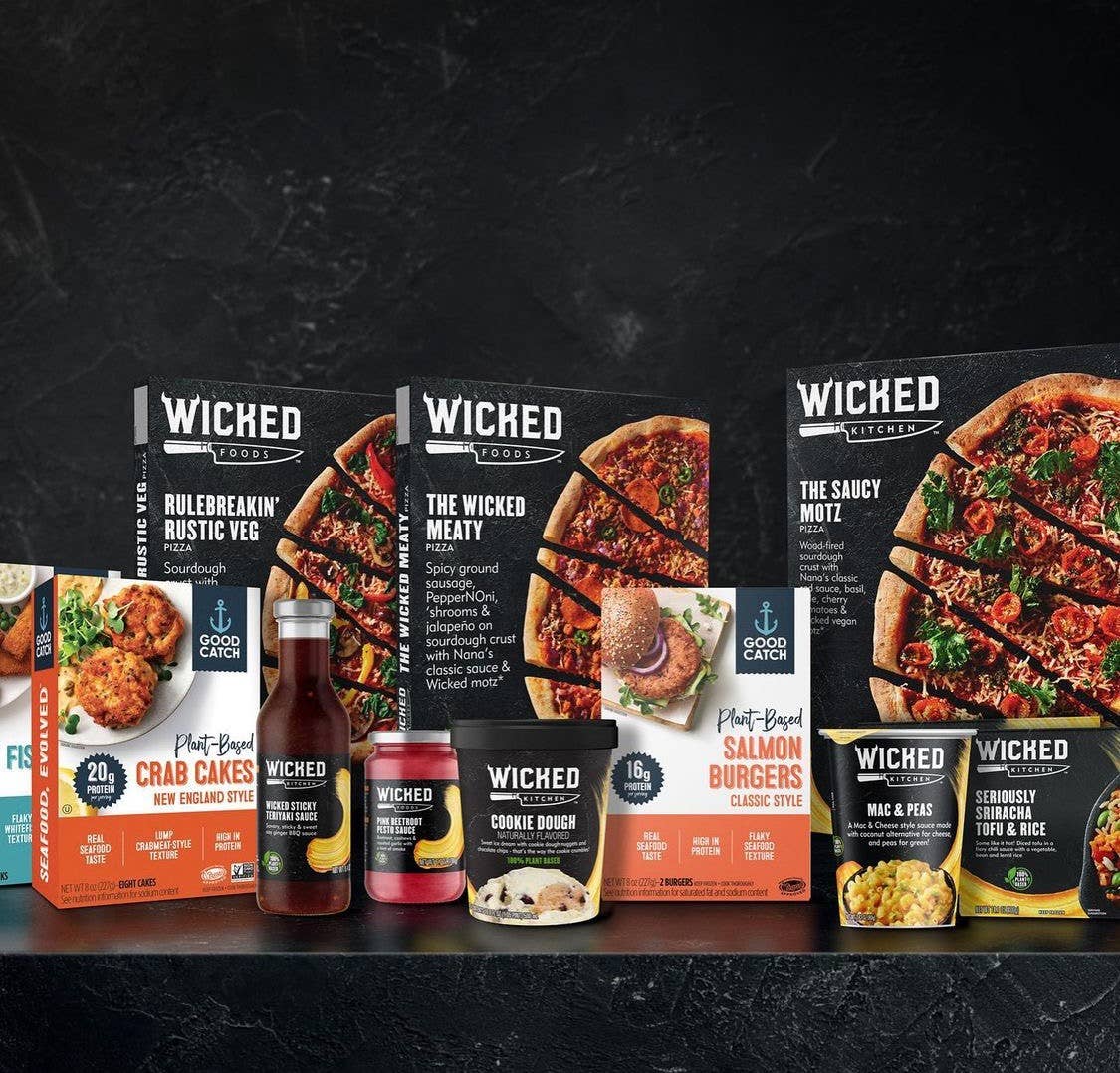
Vegan Shrimp May Be Coming to a Restaurant Near You
You can find pretty much any type of plant-based meat alternative in the grocery store, from chicken to beef to pork alternatives, but there is noticeable white space in the plant-based seafood market. Luckily, New Wave Foods is working on filling this space, announcing that its plant-based shrimp will now be available nationwide. After the company’s $18 million Series A round of funding, New Wave Foods set its sights on expanding its line of plant-based foods beginning with a plant-based seafood option. The New Wave Shrimp is made with ingredients including seaweed, mung bean, and plant protein, creating a product that mimics the shape, taste, and texture of real shrimp.
Food giant Tyson is helping to back New Waves Foods, providing the plant-based company with monetary support and the ability to enhance its product and expansion. The alternative seafood producer also signed a non-exclusive agreement with Dot Foods, launching the New Wave Shrimp distribution for North American food industries.
“Following our recently announced $18 million Series A financing, we’re excited to launch this new agreement which extends our presence and provides food service companies throughout the U.S. greater access to New Wave’s plant-based shrimp,” New Wave Foods CEO Mary McGovern said. “Given Dot Food’s vast foodservice distribution coverage, this partnership provides New Wave Foods with immediate national availability while demonstrating Dot’s belief in the growth of plant-based eating and New Wave’s product offering.”
New Wave Foods plans to build out its alternatives to include a number of shellfish alternatives including plant-based lobster and crabs by 2022. The population of wild shellfish remains at a steady decline, inspiring New Wave Foods to meet the demand that the United States has for shellfish, especially shrimp. The company aims to target restaurants and food retailers in order to deliver the shrimp alternative directly to consumers.
“We know that commercial and non-commercial foodservice operators need to continue to excite their guests with innovative food products, and plant-based food is the largest growing segment,” Director of natural and specialty for Dot Foods Rodd Willis said. “New Wave Shrimp is an extremely unique product - a true game-changer in the seafood industry. We believe that it is a great plant-based alternative to ocean shrimp as an ingredient and that it delivers on the needs of foodservice operators for menu versatility and quality.”
The company hopes to see its product enter the North American market as soon as possible. It expects to see New Wave Shrimp incorporated in restaurant menus by summer with the other alternative shellfish arriving next year. Joined by other companies such as The Plant-Based Seafood Co. and Sophie’s Kitchen, New Wave Foods is paving the way for the American market to serve sustainable shellfish alternatives to seafood lovers across the continent.
Top 10 Sources of Plant-Based Protein According to a Nutritionist
1. Seitan
Protein: 21 grams in ⅓ cup (1 ounce) Seitan isn’t as popular as other proteins, but it should be! Made from wheat gluten, its texture resembles ground meat. It’s often used in pre-made veggie burgers or meatless nuggets. Seitan has a savory taste, like mushrooms or chicken, so it works well in dishes that call for an umami flavor. With a hearty texture, seitan can be the star of practically any vegan main dish. Add it to stir-fries, sandwiches, burritos, burgers, or stews. Like tofu, seitan will take on the flavor of any marinade or sauce.
2. Tempeh
Protein: 16 grams in 3 ounces If you like a protein with a bit of bite, add tempeh to your list. Made from fermented soybeans, tempeh has a slightly nutty flavor and is pressed into a block. Most varieties include some sort of grains, such as barley or millet. Not only is tempeh a plant-based source of protein, but the fermentation process also creates good-for-your-gut probiotics. You can cut tempeh right off the block and use it as the base for a sandwich or pan-fry it with some sauce. Or, crumble, heat, and make it the star of your next taco night.
3. Lentils
Protein: 13 grams in ½ cup cooked Lentils come in multiple varieties--red, yellow, green, brown, black. Regardless of the type lentils are small but mighty nutritional powerhouses. They pack a good amount of protein as well as iron, folate, and fiber. When cooked, brown lentils retain their texture and can be the base for a grain bowl or make a hearty substitute for ground meat in meatballs, lasagna, tacos or Bolognese. Red lentils are a bit softer and make a nice add-in for a hearty soup, chili, or stew.
4. Hemp Seeds
Protein: 10 grams in 3 tablespoons Hemp seeds are a tender and nutty seed, derived from the hemp plant. They contain good amounts of omega-3s, iron, folate, magnesium, phosphorus, and manganese. They are also a solid source of both soluble and insoluble fiber, which helps to keep your digestive tract healthy and humming. Because they pack a double whammy of protein and healthy fats, hemp seeds can help satisfy hunger, preventing those embarrassing stomach growls as you slog your way to your lunch break. Add them to your morning smoothie or sprinkle them on top of yogurt, oatmeal, or even a salad.
5. Tofu
Protein: 9 grams in 3 ounces (⅕ of a block) Made from coagulated soybeans, tofu is the most popular plant-based protein. Soy is one of the only meatless "complete" proteins, meaning that it contains all of the essential amino acids that the body can’t make but needs for muscle and immune function. With 15% of your daily calcium needs, tofu is also a good replacement for dairy.
6. Edamame
Protein: 9 grams of protein in ½ cup This sushi appetizer is a nutrient powerhouse, so eat it anytime. Edamame is really just another name for soybeans in their pods. Let’s list off some stats--a small ½-cup serving of edamame has 9 grams of protein, 15% of your daily vitamin C, 10% of your daily iron and 16% of your daily fiber. Keep a bag of edamame in your freezer to serve as a fun-to-eat side dish or opt for the shelled variety to toss into salads or a grain bowl.
7. Quinoa
Protein: 8 grams per cup (cooked) Quinoa is an ancient grain and since it's gluten-free a great choice for anyone avoiding gluten. Add it to your burger recipe to create filling texture, or instead of meat in your taco or burrito. Quinoa is among the healthiest foods on the planet, delivering phytonutrients that have anti-inflammatory qualities, so keep it in your pantry for any meal that needs a filling grain. Just remember to soak it and rinse before cooking to get rid of any bitter taste.
8. Black Beans
Protein: 7 grams in ½ cup (canned) Eating beans on the regular might as well be a prerequisite for a plant-based diet. Not only are canned black beans inexpensive, but they also contribute 10% of your daily iron and 25% of your daily fiber to your diet. For less than $1 a can, beans can be the star of tacos, quesadillas, salads, soups, burgers, or dips.
9. Amaranth
Protein: 6 grams in ⅔ cup (cooked) Chances are you’ve never cooked amaranth. But you should, since this tiny, gluten- free grain is packed with almost 30% of your daily fiber and 20% of your daily iron. Cook it like a traditional grain to yield a soft, porridge-like texture. Many people add amaranth to other a hot breakfast cereal mixture, like oats and quinoa. It also pops like popcorn. Toss it in a pot with some oil and wait for it to pop up into a nutritious snack.
10. Peas
Protein: 5 grams in ⅔ cup If peas were one of your most hated veggies as a kid, it’s time to give them another chance. These green beans are a great low-calorie protein to keep in your freezer. Sure, they don’t always taste great when steamed or microwaved (who wants to eat mushy, overcooked peas?), but they do blend well into a yummy puree that can be slathered on toast. To amp up the flavor, add some lemon juice or mint to your mix before you blend.
More From The Beet






